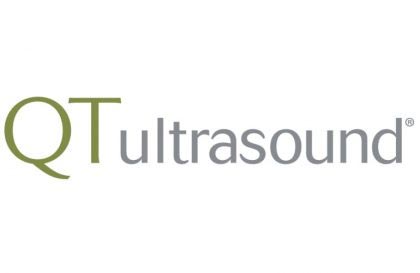- Home
- Editorial
- News
- Practice Guidelines
- Anesthesiology Guidelines
- Cancer Guidelines
- Cardiac Sciences Guidelines
- Critical Care Guidelines
- Dentistry Guidelines
- Dermatology Guidelines
- Diabetes and Endo Guidelines
- Diagnostics Guidelines
- ENT Guidelines
- Featured Practice Guidelines
- Gastroenterology Guidelines
- Geriatrics Guidelines
- Medicine Guidelines
- Nephrology Guidelines
- Neurosciences Guidelines
- Obs and Gynae Guidelines
- Ophthalmology Guidelines
- Orthopaedics Guidelines
- Paediatrics Guidelines
- Psychiatry Guidelines
- Pulmonology Guidelines
- Radiology Guidelines
- Surgery Guidelines
- Urology Guidelines
QT Ultrasound creates first 3D printing image of human breast microanatomy

NOVATO, Calif. -Using its technology, QT Ultrasound has now created the first 3D printing of the breast duct system in a living woman. It is the only developer of the transmission ultrasound breast imaging technology approved by the FDA.
In 2018, the Food and Drug Administration (FDA) granted QT Ultrasound Breakthrough Device designation for its QT Scanner, potentially offering new opportunities for earlier and more frequent screening for young women at high risk for breast cancer who have no available FDA-cleared screening options.
The QT Ultrasound Breast Scanner is indicated for use as an ultrasonic imaging system to provide reflection-mode and transmission-mode images of a patient's breast. The device is not intended to be used as a replacement for screening mammography.
Transmission ultrasound can image microanatomy in living humans and can isolate human tissue types using speed of sound. QT Ultrasound's first application of their technology in breast imaging and the QTscan™ was cleared for marketing by the FDA in 2017. Unlike traditional breast imaging, the QTscan has no radiation, no compression, and no injections, which makes it a welcome addition to the arsenal of breast health modalities. The technology produces high-fidelity detailed scans, providing clarity even for women with dense breasts.
Beyond the accomplishments of this new imaging modality, the company has now demonstrated that the technology has the ability to produce 3D printed images of a person's breast tissue-specific microanatomy. This is the first example of 3D printing of human breast tissue-specific microanatomy using any medical imaging modality and has the potential to be a new diagnostic tool, and a new way for physicians to visualize human health and disease.
"We are on a mission to change the paradigm of breast imaging," says QT Ultrasound's CEO, Dr. John Klock. "Transmission ultrasound provides high definition imaging of breast tissue, and we're excited to show why true 3D data acquisition and image reconstruction matters. The benefits of being able to see breast tissue information in a true 3D volume, and then segment and isolate the tissue types, include new opportunities to examine the ductal network of the female breast in ways we never could before."

Disclaimer: This site is primarily intended for healthcare professionals. Any content/information on this website does not replace the advice of medical and/or health professionals and should not be construed as medical/diagnostic advice/endorsement or prescription. Use of this site is subject to our terms of use, privacy policy, advertisement policy. © 2020 Minerva Medical Treatment Pvt Ltd